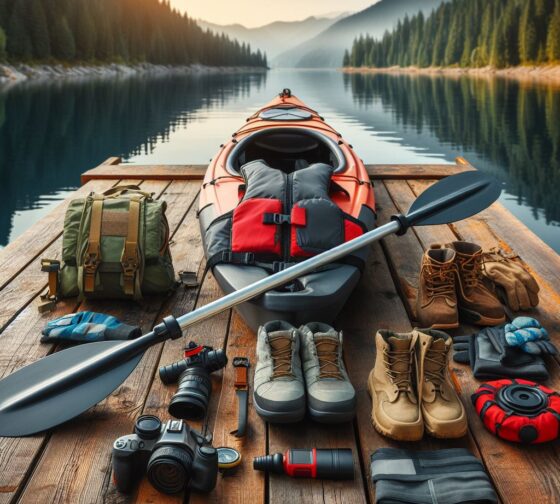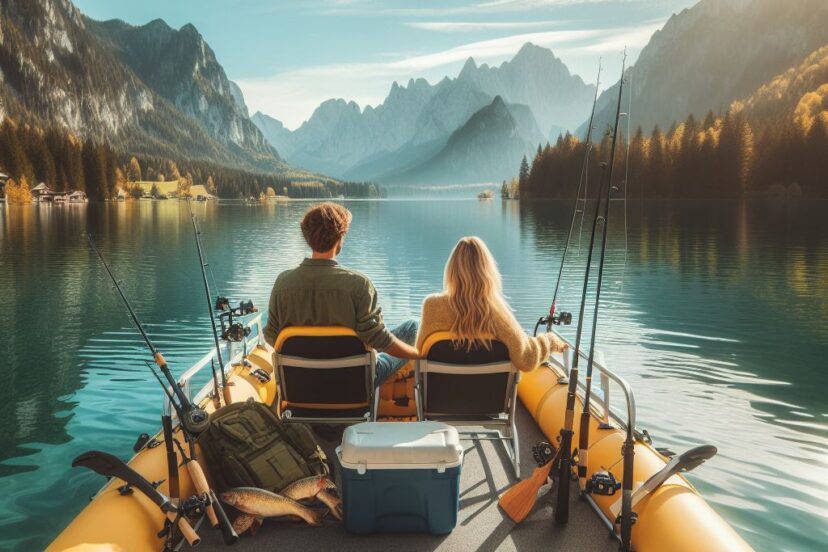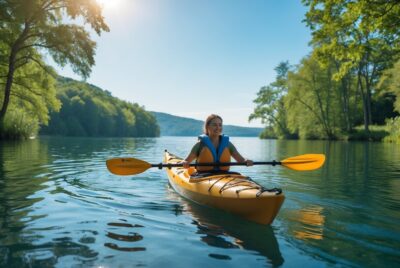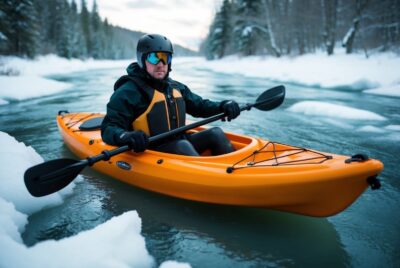Pontoon Kayak: A Guide to Mastering Water Adventures
*We may earn a commission for purchases made using our links. Please see our disclosure to learn more.
Pontoon Kayak: A Guide to Mastering Water Adventures
Introduction to a Pontoon Kayak
What is a Pontoon kayak? It is a hybrid of a traditional kayak and pontoon boat, offering an unparalleled blend of stability and maneuverability. Perfect for both beginners and seasoned kayakers, these vessels allow for a variety of activities, from tranquil paddling to active fishing. Their dual-hull design significantly reduces the risk of capsizing, making them a top choice for those who value safety and comfort on the water.
Choosing the Right Pontoon Kayak
Selecting the ideal pontoon kayak involves considering your personal needs and the conditions you’ll face. Key factors include the kayak’s weight capacity, the type of water you’ll be navigating, and its storage capabilities. There are several types, ranging from inflatable models for easy transport to rigid kayaks for enhanced durability. Each has its unique advantages, whether you’re planning a leisurely day trip or an adventurous fishing expedition.
My Top 5 picks for a Pontoon Kayak
- Classic Accessories Colorado XTS Pontoon Boat: This inflatable pontoon kayak is known for its durability and ease of transport. It features heavy-duty pontoons, a powder-coated steel tube frame, and tough nylon tops. It offers a large storage capacity, adjustable seat and footrests, and mounting provisions for a transom motor. It’s notable for its 20 pockets and two insulated drink holders, making it a convenient choice for extended trips on the water.
- AQUOS Heavy Duty 9ft Inflatable Pontoon Boat: Ideal for those seeking a budget-friendly option, this pontoon kayak is made of heavy-duty PVC, can hold up to 550 lbs, and is praised for its stability and safety. It comes with four individual air chambers and offers excellent balance and stability. Additional features include ample storage pockets and reflective stripes for visibility, making it a great choice for fishing and leisure activities.
- Sea Eagle 285 Inflatable Fishing Pontoon: This kayak stands out with its lightweight frameless design and trolling motor engine capacity. It includes a 360° Swivel Seat and 7″ Pedestal for easy navigation. Made from 1000 Denier reinforced material, it’s durable and stable in rough waters. When deflated, it’s compact for easy storage and transport, making it a popular choice for fishing and exploring.
- Sevylor Quikpak K1 1-Person Kayak: This is a lightweight, inflatable kayak that is easy to set up and ideal for solo paddlers. It features three air chambers for safety, D-rings for gear attachment, and a tarpaulin bottom for puncture protection.
- BRIS 14.1ft Inflatable Boat Inflatable Kayak Pontoon Boat: A durable and spacious option, this kayak has an aluminum floor, heavy-duty PVC pontoons, and is suitable for up to three people. It includes a removable sun canopy and a fishing rod holder, making it an excellent choice for fishing trips.
Essential Gear for Pontoon Kayaking

Safety should always be your top priority when kayaking. Essential gear includes a life jacket, whistle, and headlamp – crucial items for any trip. Additionally, consider equipping yourself with a paddle leash, waterproof storage bags, and a GPS device for navigation in unfamiliar waters. This gear not only ensures safety but also enhances the overall kayaking experience.
Techniques for Efficient Paddling on a Pontoon Kayak
Mastering efficient paddling techniques is essential for an enjoyable pontoon kayaking experience. Basic strokes, such as the forward and reverse strokes, are fundamental, but more advanced techniques can significantly enhance your ability to maneuver and maintain stability. Understanding how to balance and effectively control your kayak will ensure a smooth and enjoyable ride.
Advanced Paddling Techniques and Strategies
Advancing your paddling skills is crucial for a more fulfilling pontoon kayaking experience. Beyond the basics, mastering advanced techniques can significantly improve your efficiency and enjoyment on the water.
Edging and Bracing: These techniques involve tilting the kayak to enhance maneuverability and stability. By edging, you shift your weight slightly to one side, allowing for sharper turns and better control in windy conditions. Bracing, on the other hand, is about using your paddle as a support tool to prevent capsizing in rougher waters.
Efficient Stroke Patterns: Developing a rhythm in your paddling can conserve energy and increase speed. It’s about finding a balance between stroke power and frequency. For longer journeys, a steady, consistent pace is more sustainable than short, powerful bursts.
Utilizing the Pontoon Kayak’s Design: The unique structure of a pontoon kayak allows for specific maneuvers that might be challenging in traditional kayaks. For example, their enhanced stability makes them ideal for side-stroking techniques, useful in photography or fishing when you need to remain stationary but adjust your position slightly.
Implementing these advanced strategies not only makes your kayaking more efficient but also enhances safety. They provide you with greater control over your vessel in varying conditions, ensuring a more confident and enjoyable experience on the water.
Maintenance and Care of Pontoon Kayaks
Proper maintenance is crucial for the longevity of your pontoon kayak. Regular inspections of the hull, proper cleaning after each use, and timely repairs can extend its life. Additionally, correct storage and transportation methods, such as using kayak covers and racks, can prevent damage and wear.
Best Locations for Pontoon Kayaking
The best locations for pontoon kayaking often include calm lakes and gently flowing rivers, providing a serene and stable environment ideal for these kayaks. These locations offer scenic beauty and a chance to enjoy wildlife, making them perfect for both leisure and fishing activities.
Conclusion
Pontoon kayaking is more than just a pastime; it’s a way to connect with nature and experience the water in a unique and thrilling way. Whether it’s for fishing, exploration, or simply enjoying a peaceful day out, a pontoon kayak is an excellent vessel for a variety of water adventures.
FAQs
- What makes pontoon kayaks different from regular kayaks? Pontoon kayaks differ in their design, featuring a dual-hull or catamaran style that provides superior stability and buoyancy compared to traditional single-hull kayaks. This makes them ideal for activities like fishing, where extra stability is crucial.
- Are pontoon kayaks suitable for beginners? Absolutely! Their stability and ease of maneuvering make pontoon kayaks excellent for beginners. They provide a reassuring platform for those new to kayaking, reducing the fear of capsizing and making it easier to learn basic paddling techniques.
- How do I maintain and store my pontoon kayak? Regular maintenance includes cleaning the kayak after each use, checking for and repairing any damage, and ensuring all components are in good working order. For storage, keep it in a cool, dry place out of direct sunlight. Using a kayak cover can also protect it from dust and other elements.
- Can I use a pontoon kayak in rough waters? While pontoon kayaks are highly stable, they are best suited for calm to moderately flowing waters. They can handle some choppy conditions, but it’s essential to assess your skill level and the kayak’s design limitations before venturing into rough waters.
- What safety gear should I always have when pontoon kayaking? Essential safety gear includes a well-fitted life jacket, a whistle for signaling, a headlamp or flashlight for visibility, a first-aid kit, and a mobile phone in a waterproof case. It’s also wise to carry extra water and food, especially on longer trips.




